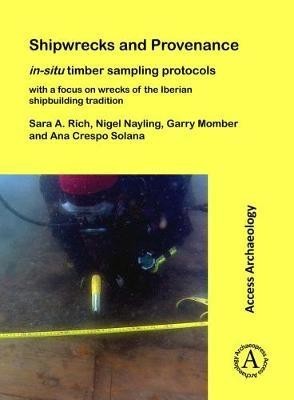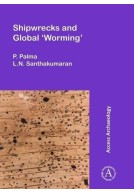Shipwrecks and Provenance: in-situ timber sampling protocols with a focus on wrecks of the Iberian shipbuilding tradition (Paperback)
Imprint: Archaeopress
Pages: 74
Illustrations: Illustrated throughout in colour and black & white (21 colour plates)
ISBN: 9781784917173
Published: 28th February 2018
Script Academic
Pages: 74
Illustrations: Illustrated throughout in colour and black & white (21 colour plates)
ISBN: 9781784917173
Published: 28th February 2018
Script Academic
You'll be £10.00 closer to your next £10.00 credit when you purchase Shipwrecks and Provenance: in-situ timber sampling protocols with a focus on wrecks of the Iberian shipbuilding tradition. What's this?
+£4.99 UK Delivery or free UK delivery if order is over £40
(click here for international delivery rates)
Need a currency converter? Check XE.com for live rates
(click here for international delivery rates)
Need a currency converter? Check XE.com for live rates
Two of the questions most frequently asked by archaeologists of sites and the objects that populate them are How old are you?' and Where are you from?' These questions can often be answered through archaeometric dating and provenance analyses. As both archaeological sites and objects, shipwrecks pose a special problem in archaeometric dating and provenance because when they sailed, they often accumulated new construction material as timbers were repaired and replaced. Additionally, during periods of globalization, such as the so-called Age of Discovery, the provenance of construction materials may not reflect where the ship was built due to long-distance timber trade networks and the global nature of these ships' sailing routes. Accepting these special challenges, nautical archaeologists must piece together the nuanced relationship between the ship, its timbers, and the shipwreck, and to do so, wood samples must be removed from the assemblage. Besides the provenance of the vessel's wooden components, selective removal and analysis of timber samples can also provide researchers with unique insights relating to environmental history. For this period, wood samples could help produce information on the emergent global economy; networks of timber trade; forestry and carpentry practices; climate patterns and anomalies; forest reconstruction; repairs made to ships and when, why, and where those occurred; and much more. This book is a set of protocols to establish the need for wood samples from shipwrecks and to guide archaeologists in the removal of samples for a suite of archaeometric techniques currently available to provenance the timbers used to construct wooden ships and boats. While these protocols will prove helpful to archaeologists working on shipwreck assemblages from any time period and in any place, this book uses Iberian ships of the 16th to 18th centuries as its case studies because their global mobility poses additional challenges to the problem at hand. At the same time, their prolificacy and ubiquity make the wreckage of these ships a uniquely global phenomenon.
Other titles in Archaeopress...










